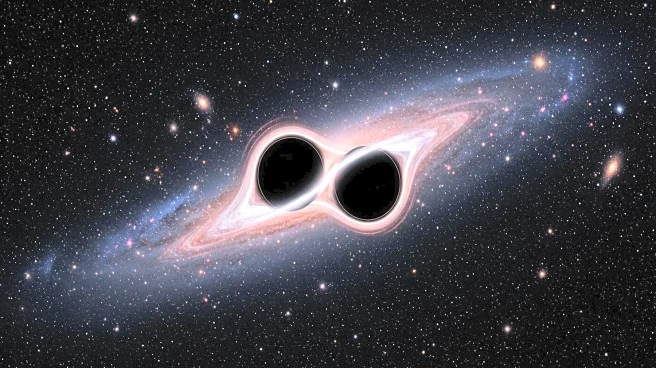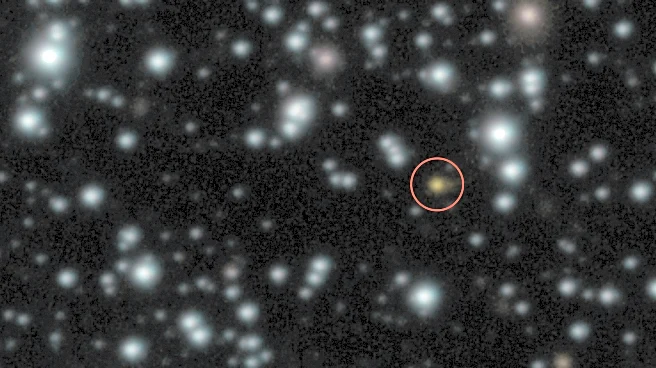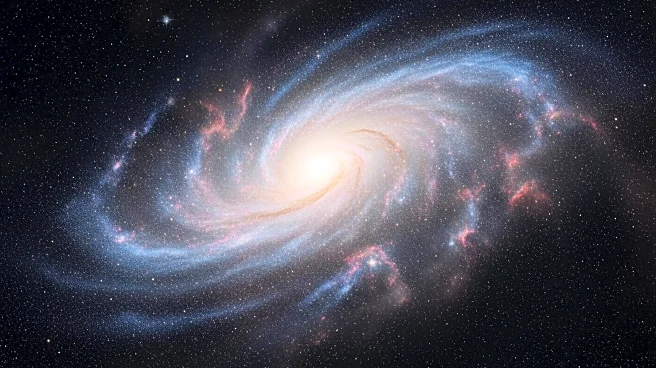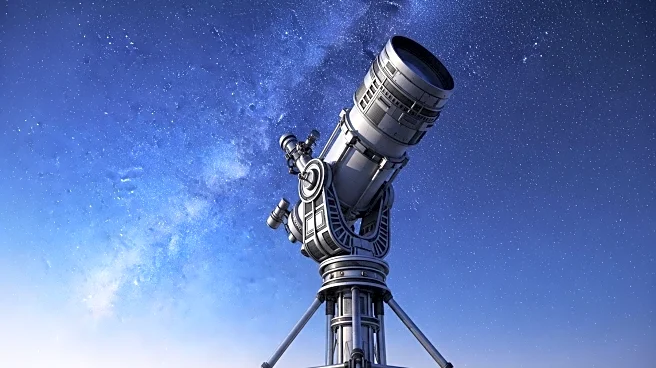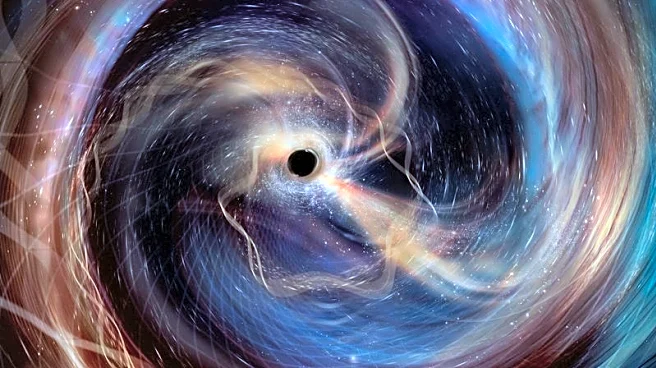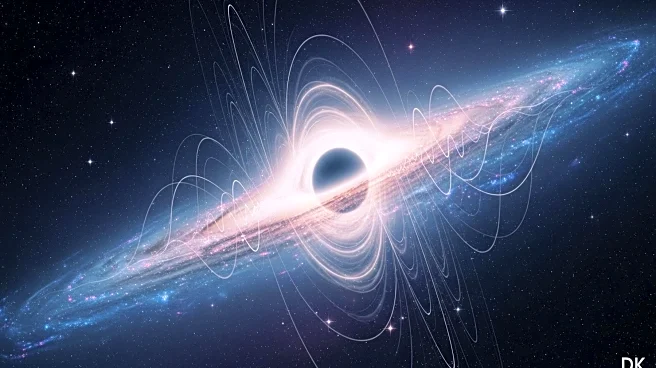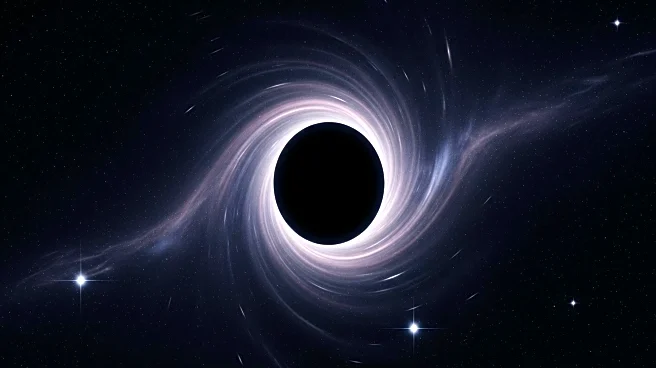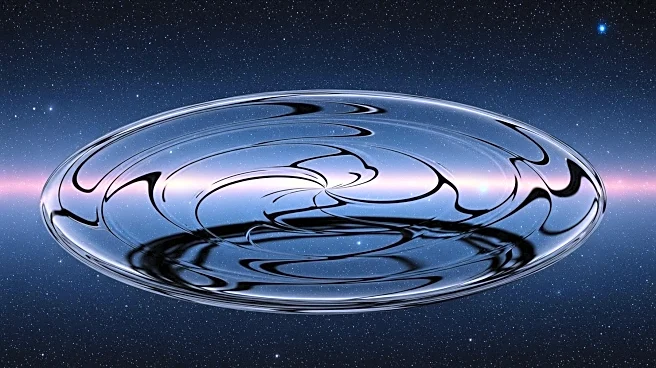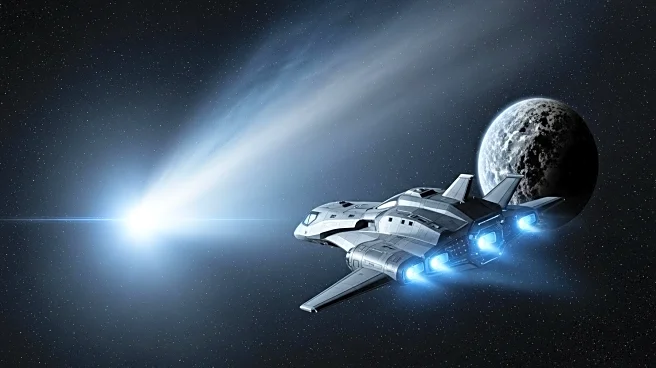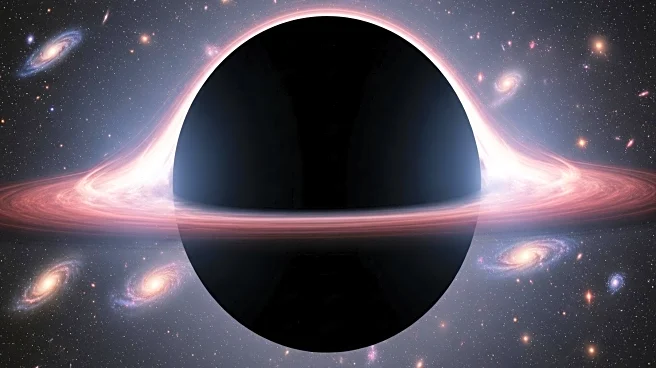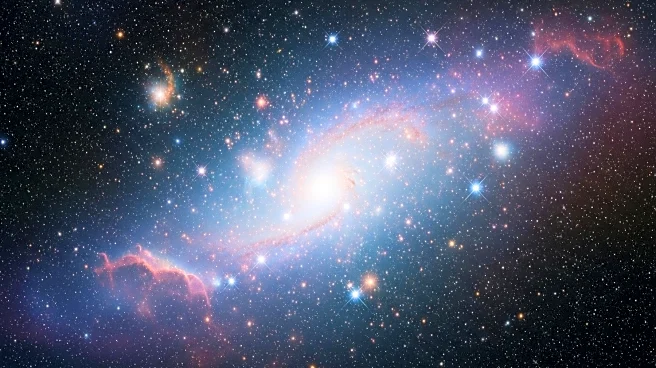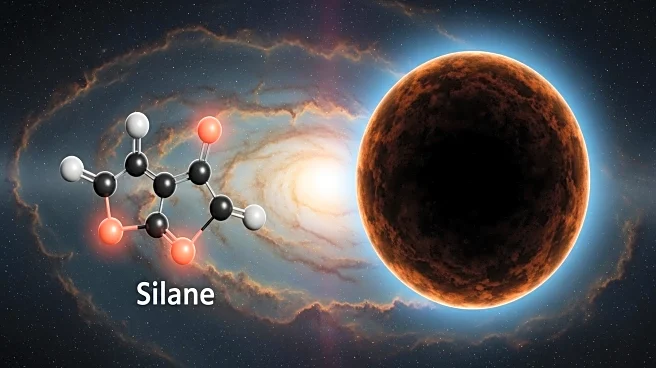What is the story about?
What's Happening?
The Laser Interferometer Gravitational-wave Observatory (LIGO) has detected a merger event between two black holes, providing evidence for Stephen Hawking's black hole area theorem. The detection, made on January 14, confirms that the event horizon of the resulting black hole is larger than the sum of the two original black holes. This observation supports Hawking's prediction that the event horizon can never decrease in size. The study, led by Adrian G. Abac, was published in the journal Physical Review Letters.
Why It's Important?
The confirmation of Hawking's theorem has significant implications for the field of astrophysics, reinforcing the concept of black holes as thermodynamic objects. It highlights the relationship between general relativity and quantum mechanics, suggesting that black holes have entropy and emit radiation due to quantum effects. This discovery could lead to a paradigm shift in how scientists understand black holes and their role in the universe, potentially influencing future research in theoretical physics.
What's Next?
As LIGO continues to improve its detectors, researchers anticipate more precise observations of black hole mergers. The planned addition of LIGO-India in 2030 will enhance the network's ability to localize gravitational-wave sources. These advancements may lead to new discoveries about the earliest black hole mergers in the universe and further tests of Hawking's theorem. The scientific community will continue to explore the implications of these findings, potentially leading to new theories and breakthroughs in astrophysics.
AI Generated Content
Do you find this article useful?
